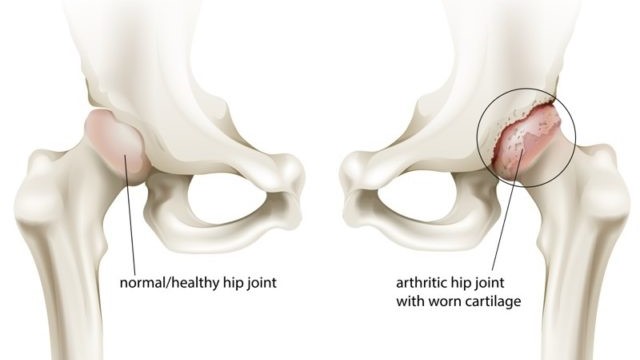Osteoarthritis
Osteoarthritis is a common type of arthritis that shows up when your protective cartilage providing support to the bone ends wears away. The condition is painful and can damage any joint of your body, but mostly affects the joints of your knees, hands, spine and hip. It affects millions of people around the globe with symptoms that can be easily managed with proper medical supervision. There is no permanent cure of the condition, but treatments to control the severity is available.
It is essential to stay active, maintain a healthy weight, and visit an orthopedist on noticing any symptoms of osteoarthritis.

Causes
-
- Hereditary
- Obesity
- Ageing
- Joint injury
- Bone Deformity (developmental deformity)
Symptoms
- Pain
- Swelling and stiffness
- Grafting sensation
- Bone Spurs
- Lack of flexibility
- Tenderness
Diagnosis
- CT-Scan
- X-Rays
- MRI
Treatment
Non-surgical Treatments
Medications: Your orthopedic specialist may provide you with some specific kind of medication to control the symptoms of osteoarthritis, such as acetaminophen, NSAIDs, Duloxetine etc.
Therapy: Both physical and occupational therapy are advised to manage osteoarthritis symptoms. Physical exercises include activities like walking, swimming, and other stretching exercises to strengthen the muscles surrounding your affected joints. Occupational therapy involves finding ways to make your everyday tasks easier by reducing the stress of handling things like your toothbrush, comb, etc.
Surgical Treatments
Cortisone injections: The surgeon may inject corticosteroids to relieve the joint pain. To do this, the doctor will numb the area covering your joint, points the needle into the area in your joints before injecting the medication. You must not take more than 3-4 cortisone injections in a year as a high dose can worsen the condition.
Lubrication injections: Lubrication injections or hyaluronic acid injections help relieving pain by providing cushioning support to your joint.
Realigning bones: If one side of your hip is affected by osteoporosis, osteotomy (realigning the bones) may be a useful treatment option.
Joint replacement: In a joint replacement surgery, the affected joint is replaced with artificial joints made up of metal and plastic. When done for your hips, it is also called hip arthroplasty.
Discuss suitable treatment options for osteoarthritis with our orthopedists. Book an appointment now!
Book your appointment today to get proper diagnosis and treatment for your shoulder fracture.
Book your appointment today to get proper diagnosis and treatment for your shoulder fracture.
Interventions
Important Links
Contact Us
Room No: 338, 3rd Floor
Yasodha Hospital
Somajiguda, Hyderabad.
+91 99499 99499
drtdrreddy@hotmail.com
